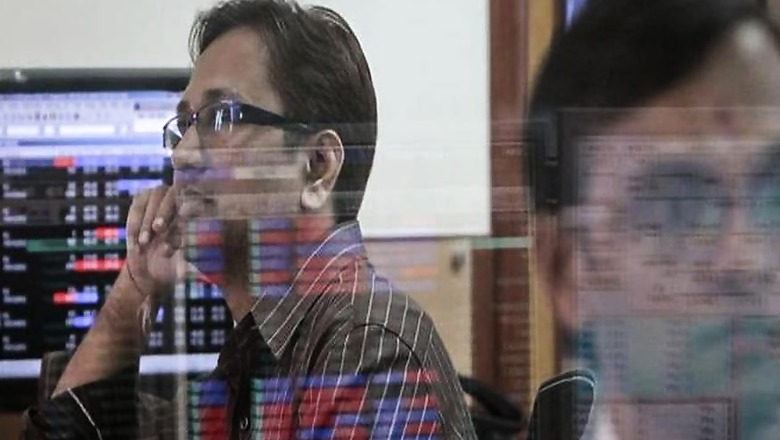
views
Mumbai: Tuesday was a morning of dips and tanks for the Indian stock market, which has been witnessing its worst fall this year. With major reasons for the dip still persisting, more blood is expected on Dalal Street.
US’ Dow Jones plunged 1,175 points on Monday, its worst drop in terms of points of all time and its worst percentage decline since August 2011.
Experts are of the opinion that Wall Street was overdue a reality check. The Dow Jones industrial average was up over 26 percent from January 2017 to January 2018, three times the average rise.
Dow was sitting at an all-time high on January 26, just over a week ago. At the moment, the Dow is down 8.5 percent from that record level.
Indian investors lost around Rs 4.95 lakh crore amid sell-off in the broader market on Tuesday where the benchmark BSE Sensex tumbled 1,275 points or 3.6 percent in opening trade. Following the downfall, the total market capitalization of BSE listed companies eroded by Rs 4,94,766 crore to Rs 1,43,00,981 crore.
On BSE, 2,221 stocks declined, while 169 advanced and 83 remained unchanged.
Shares tumbled across Asia – Japan's Nikkei 225 index dropped as much as 5.6 percent in early trading Tuesday. Hong Kong's Hang Seng index lost 4.4 percent to 30,819.25 and Australia's benchmark S&P ASX 200 had skidded 2.9 percent to 5,852.20. South Korea's Kospi declined 2.9 percent to 2,418.79 and the Shanghai Composite index was off 2.2 percent at 3,412.37.
Here’s why the US markets tanked, resulting in the global market plummet:
The Friday Jobs Report: On Friday, the Labor Department of the United States came up with its monthly report on how many jobs were created in January and how fast wages were growing. The economy had added 200,000 jobs, and wages grew by 2.9 percent, the most since 2009. However, Wall Street looks at things differently. When companies pay workers more, it usually means lower profits for shareholders.
Inflation: Inflation, in a controlled parameter is a good thing because it usually coincides with a healthy, growing economy. However, too high inflation is dangerous. It causes people to lose faith in the value of money, as it decreased the buying capability of a currency. With wages increasing, the money flow will automatically rise in the economy, inflation is bound to go but by how much, is the question.
Federal Reserve: The United States central bank is known for its pre-emptive measures that have more often than not brought about recessionary trends in the economy.
The economy starts to grow faster than expected, wages and inflation shoot up, and then the Federal Reserve (Fed) reacts by aggressively raising the ongoing interest rates. This causes businesses and consumers to close their wallets, and the economy starts to dip.
The Fed has indicated that it intends to raise rates three times this year, so rates would end at 2.25 percent.
Investors are now worried that inflation might pick up even faster, forcing the Fed to raise rates to 2.5 or even 3 percent this year.
Post-Budget Dip: Indian markets, as a reactionary measure to the Union Budget 2018 had been rather low, post-February 1, 2018. Finance Minister Arun Jaitley’s implementation of 10% capital gains tax on long terms assets i.e. assets worth more than Rs 1 lakh, has not gone down too well with the markets.


















Comments
0 comment